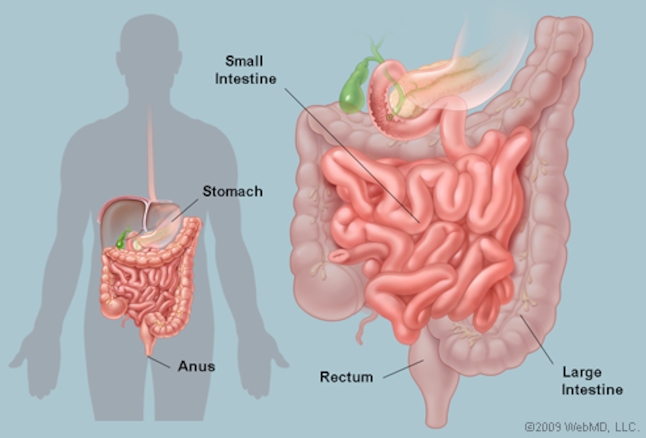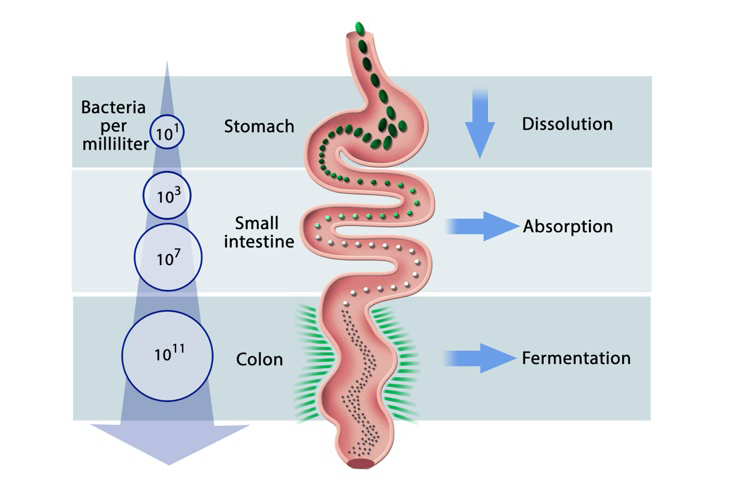JAN 19
From Alfino
Jump to navigationJump to searchContents
- 1 1: JAN 19. Course Introduction
- 1.1 First Day of Class Information
- 1.2 Assigned Work
- 1.3 In-Class
- 1.4 Using the NSP model to think about dietary design and dietary goals
- 1.5 Visual Aids for thinking about your Microbiota
- 1.6 Sylvie Gilman, "Microbiota: The Amazing Powers of the Gut"
- 1.7 Sonnenbergs, C 1, "What is the Microbiota and Why Should I Care?"
- 1.8 Some implications of Microbiome research
1: JAN 19. Course Introduction
First Day of Class Information
- Welcome - personal introduction and welcome. (Some student introductions.)
- About the Course (Overview of cou==2. JAN 19: Unit 1: Food, Health, and Nutrition==
Assigned Work
- Sonnenbergs, C 1, "What is the Microbiota and Why Should I Care?" (26)
- Food biographies due by midnight before this class.
- View this movie on the Microbiome:
- Microbiota: The Amazing Gut. 2019. Sylvie Gilman. "Hidden deep in our intestines, 100,000 billion bacteria are keeping us healthy by producing a range of molecules. Although their names may be perplexing: Fecali bacterium, Roseburia, Akkermansia mucinifila, Eubacterium halli, as well as being invisible to the naked eye, they could revolutionize the future of medicine. That is, if our modern lifestyle doesn't wipe them out first." On Amazon Prime. [1]
In-Class
- Review of 1st Day Food Survey
- NSP segment
Using the NSP model to think about dietary design and dietary goals
- Working from the wiki document Nutrition,_Satisfaction,_Practicality_and_Dietary_Change we will look at some of the interactions of N, S, and P.
Visual Aids for thinking about your Microbiota
Sylvie Gilman, "Microbiota: The Amazing Powers of the Gut"
- Opening scene: Birth of a child. We are colonized at birth.
- Microbiota research -- stools. Sequencing technology. The microbiome is the collective 100,000 billion. More than # of cells in your body. Why? (extended genome hypothesis -- example Vitamin C)
- Meet the Sonnenbergs! 5:10 - Microbes manufacture compounds, drugs for us. Digestion, disease protection, vitamin production, brain effects (serotonin). Analogy to a forest.
- Effects of modern diet - less genetic variety. More thinning. Switches to African aboriginal eaters. Jeff Leach, “Dr. Shit”. Hudza in Tanzania. 2x diversity of gut microbes. Amazon study, also. 50% more diverse. Ancestral lifestyles maintain microbiome diversity.
- 14:15 — effects of antibiotics. Can cause extinction of species. Like a bomb. Mouse studies - even short courses of antibiotics can affect metabolism — weight gain. Immune system changed. Asthma. Effects on young mice more profound. Possible hypothesis: early exposure < 6 months predicts obesity and asthma.
- 18:14 — Caesarean births. More research by Maria Gloria Dominguez-Bello, Rutgers. New practice of feeding c-section babies with mix of vaginal germs.
- Back to Hudza — high fiber diet may be a variable. 22:30. Short chain fatty acids SCFAs (also discussed in Sonnenberg reading. Erica Sonnenberg — mouse study of low fiber diet over 4 generations. Loss of 1/2 of diversity.
- 25:05 — Effects of food additives: Emulsifiers in industrial ice cream and other industrial foods. E433 and E466. Two widespread emulsifiers in industrial foods. MOuse studies again - loss of diversity and thinning of gut mucus. 28:05. Produces intestinal inflammation, obesity, and type 2 diabetes. >anxiety! (Note how this affects your perception of the supermarket).
- Obesity research suggest microbiota differences. Same diet, different outcomes, correlated with M diversity.
- Inflammatory bowel disease — also Crone’s disease. Faecalibacterium prausnitzii implicated. More mouse studies. FP has protective effect. Edge of research: Can we add missing bacteria to remedy these conditions?
- Fecal transplants 37:30. Clostridium difficile infection causes 30,000 deaths a year. Often following heavy antibiotic treatment. High cure rate.
- 41:30 Fecal Bank. Open biome, USA. Very selective. 44:15: Segment on Crone’s patient. Tom Gravel. Approached his neighbor for donor stool. 200 donations!
- Oncology segment — immunotherapy. Impoverished microbiota may diminish a role in efficacy of anti-cancer treatments. In human study, effects from anti-biopics prior to cancer treatment. A specific bacterium identified: Akkermansia Muciniphila. More mice.
- Terlingua - Also a site for Leach. Think like an ecologist about your gut. 6 week high fiber diet can increase diversity by 30%. 56:00 Listen to the Sonnenberg. Treat your gut like a pet!
Sonnenbergs, C 1, "What is the Microbiota and Why Should I Care?"
- How the world looks to a microbiologist! "Without microbes humans wouldn't exist, but if we all disappeared, few of them would notice." 10
- Introduction to the Tube and digestion
- Microbiota Case against the Western Diet
- Inflammatory Bowel Disease. People on Western Diet wo/IBD may still not have healthy M
- Sets the history of human diet in context. Agriculture already a big change, but then industrial ag / industrial foods
- Adaptability of M remarkable. Makes us omnivores. “Microbiota plasticity”
- Baseline M - cant' be health Western Diet eaters. studies of groups like Hadza -- far more diverse.
- 19 - Evolved Symbiotic relationship between us and bacteria --
- Microbiota — Microbiome (the collective genotypes of the residents intestines). Example of Japanese seaweed consuming bacteria.
- types of symbiotic relationship - parasitic, commensal (one party benefits, little or no effect on the other), mutualism. Microbiota and us have a symbiotic, mutualist relationship. Think of them as an extension of our genome. !
- The heart warming story of Tremblaya princeps and Moranella endobia. (21) -- why we should be happy mutualists. Delegation and division of labor might create resiliance. But our fates are linked!
- 22-30 - Cultural History and History of Science on Bacteria -- or, how germs got such a bad name.
- Pasteur -- germ theory of diseases.
- The Great Stink 1858 London, Miasma theory disproved, Cholera bacterium, not isolated until near end of century. Dr. Robert Koch. Because of this history we tend to think of bacteria as threats.
- 60-70's: Abbigail Salyers: early pioneer, 2008: Human Microbiome Project. Note how recent this field is. One of the pioneers was still working in 2005.
- Note research questions on p. 28.
- Contemporary research: gnotobiotic mice. early fecal transplant studies of.[Dr. Jeffrey Gordon].
- Some functions of the Microbiota:
- Harvesting calories from MACs
- immune system support
- resistance to harmful bacteria
- regulation of metabolism
- production of seratonin
- production of SCFAs, which affect weight control
- involved in production of anti-carcinogenic compounds.
- prevention of IBS and other disorders of the gut.
Some implications of Microbiome research
- Food feeds you and your extended genome. You are eating for trillions!
- Macronutrient information is only part of assessing the potential nutrition from food. MACs (next class)
- It’s all about the tube!
rse focus. Detail to follow.)
- Course Websites: SharePoint, Wiki & Courses.alfino.org (Some student introductions.)
- Overview of Teaching Approach.
- 1. Student choice in work and grading scheme - Your "grading scheme" (the assignments you will be graded on) has both required and optional elements. You can customize up to 30% of your grading scheme to suite your learning style or motivations in the course.
- 2. Transparency grade information and student work - You will see most of the writing and scoring for required writing assignments. This will require the use of pseudonyms.
- 3. Opacity of grade information, peer comments, and student identity - Like blind review in academic life.
- 4. Writing Enhanced - Students participate in reviewing and evaluating student writing. This also requires the use of pseudonyms. (Some student introductions.)
- Succeeding in the Course:
- Prep Cycle - view reading notes as you are reading, read, note, quiz, evaluate preparation. Hierarchy of skills and goals.
- Reading - Keep track of the time you spend reading for the course. Mark a physical text. Contact me if your reading quiz scores are not what you expect.
- Writing - Try to learn the rubric, read other students' writing and compare scores, discuss your writing with me, especially during office hours.
- Keep in mind course research questions Major_Ethics_Course_Questions (Some student introductions.)
- Required Assignments and Default Grade Weights for your Grading Scheme
- Points 35-65% default = 55%
- Position Paper 1 15-25% default = 20%
- Position Paper 2 20-30% default = 25%
- More About the Course (Orientation, Content, major research questions)
- Naturalism in Ethics -- What if Ethics has its origins in our natural history? Why this is/was a radical claim.
- Fields of study represented in the course: Biology, Psychology, Moral Psychology, Evolutionary Psychology, Behavioral Economics, Philosophy, Political Science, Sociology, History
- First six weeks:
- 1. Lots of theory from the fields mentioned above directed toward our research questions Major_Ethics_Course_Questions
- 2. Exercises in "moral phenomenology" (discussion and writing about morality drawing on your experience). Also in Ethics news.
- Next nine weeks: Major Applied Topics:
- The nature of political and moral difference, and implications
- Justified Partiality
- Empathy
- Moral Responsibility Skepticism and Alternatives
- Zoom
- Video on/off
- Synchronous attendance. Send excuses for absence prior to class, if possible.
- If you miss class, please try to view the recorded class within 24 hours.
- Try think of ways to personalize the virtual experience: examples from last semester - put up a pic for video off. Share something about where you are. Dogs, cats, music, etc.
- First Day TO DO list
- Make sure you can find the three course websites and that you understand what information and tools each provides.
- Browse some links on the course wiki page
- Find reading for next class on wiki and pdfs from courses.alfino.org
- Buy Jonathan Haidt, "The Righteous Mind"
- Keep an eye out for Ethics News!
- Sign up for in person attendance. Feel free to sign up for three or four classes at a time. If that crowds others out we might need limit signups to each next class.

